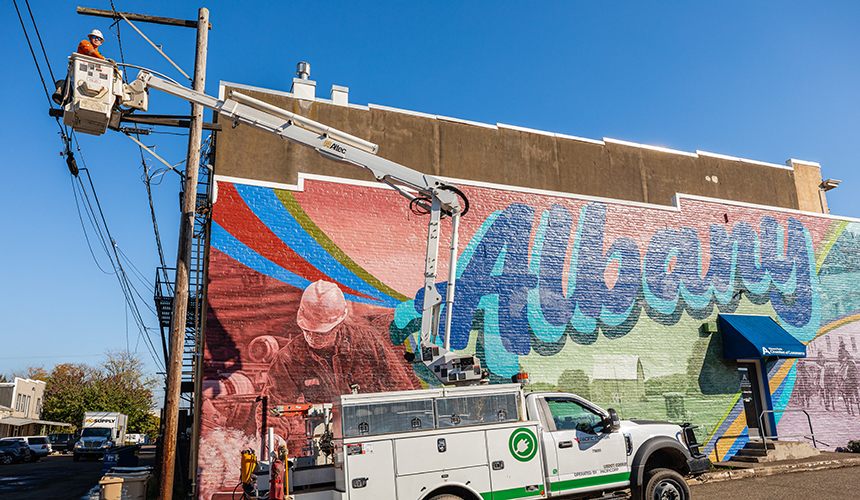Driving in the morning or night wasn’t bright for the 55,000-plus people living in the Albany area until improved lighting throughout the city increased safety — on and off the roads.
The decision to replace nearly 3,000 lights throughout the city was one thing. But doing so while saving a significant amount of money?
Radiant.
The project originated in an Albany Public Works feasibility plan nearly five years ago. It was produced by Pacific Power in partnership with Energy Trust of Oregon, and identified incentives that made the numbers work. All three phases are now complete.
In all, the city converted about 2,670 lights from outdated technology (high-pressure sodium and vapor mercury) to energy-efficient LEDs.
“The difference is clear,” says Mike Bryan, public works technical services manager. “It’s a win-win. We knew the savings could be substantial, but we also knew environmentally it was a good thing to do.”
Albany officials expected to pay more than $520,000 for the lighting upgrades, but found significant savings thanks to Energy Trust’s cash incentives.
In the final tally, the city qualified for about $207,000 in cash incentives to offset its costs. Energy Trust also estimates that Albany will save about 1 million kilowatt hours a year in energy. That translates into nearly $26,000 in annual savings on the city’s energy bills.
Brighter days ahead
LED lights shine brighter because of the technology — less energy is lost while creating heat. Even so, they cause less light pollution because the light is directed to where it’s supposed to go — downward to illuminate city streets and buildings instead of up into the sky.
This isn’t mood lighting, which wouldn’t be safe for visibility. But it’s not hospital-level bright, either, which was a concern for some.
“We’ve had just a handful of complaints,” says Kristin Preston, public works operations manager. “Maybe three people who have said that the light shines too much into my house.”
The city made sure to respond to these concerns. A contractor was soon on the case, installing a shield that directed light away from the affected homes.
For Bryan and Preston, working with Energy Trust was worthwhile— not just for the savings, but to understand what’s possible through energy efficient upgrades.
“They’re the experts, so it was good,” Bryan says of the experience.
Preston recalls representatives from Energy Trust and Pacific Power tagging along during meetings with the City Council before the project commenced.
“They know what they’re talking about,” she says. “They’re very smart people and can predict the savings. They follow through. Compared to other folks we deal with, they follow through and are always on top of things.”
To see how Energy Trust can help, visit www.energytrust.org/incentives/existing-buildings-lighting or send us an email at lighting@energytrust.org.

